Prostate is a gland which is localized below the bladder and surrounds the urethra. As a result of advanced age, this organ starts to grow, and during this process it obstructs the urinary tract and blocks urinary flow. Patients present with complaints associated with urinary functions. This is called as benign prostatic hyperplasia (BPH). Half of the patients above 60 of age and 90% of patients over the age of 85 demonstrate this condition.
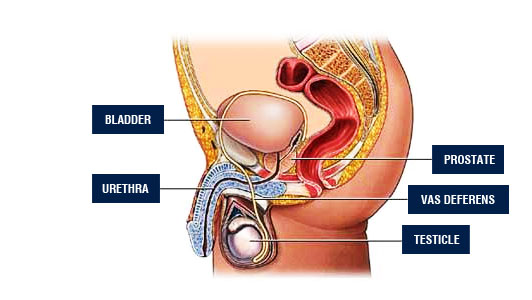
As the prostate grows, level of complaints rise and gradually cause symptoms such as difficulty in urination, urinary tract inflammation, dysfunction of bladder, bladder stones, and kidney disorder at the last stage.
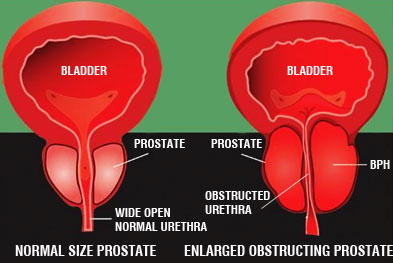
Treatment Methods
Follow-up, medical treatment, minimally invasive techniques, and surgical treatments are the main methods for BPH treatment. Many operative techniques have been developed for men with prostate enlargement in time, and recently, closed (endoscopic) methods have replaced the open operations. Closed operations include no incision or suture and patients recover more rapidly and return to their normal daily life faster. Transurethral Prostate Resection (TURP), one of the closed operations in which prostate is reached through penis and removed in small slices, is applied for many years. However, due to possible problems such as hemorrhage and TUR syndrome which may arise in this procedure, closed operation techniques that could be more successful with less complications have been investigated and developed.
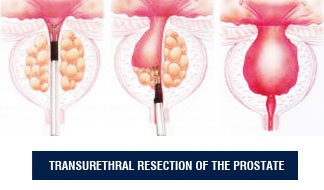
Greenlight Laser in Prostate Enlargement
Lately, laser practice has become widespread in many fields of medicine and various laser types have been employed in prostate operations. The most recent laser type used for this purpose is Greenlight. KTP laser that is applied in Greenlight laser prostatectomy or PVP (photoselective vaporization of the prostate) as called by professionals, generates a green light which explains why it is called as “Greenlight Prostatectomy“. KTP laser is absorbed selectively by the prostate tissue, meaning that it is of selective nature for prostate. Actually, Greenlight laser technology is absorbed by the hemoglobin in the blood and evaporates in the blood vessels with prostate tissue. Therefore, hemorrhage is almost nonexistent during the procedure.
Greenlight Laser Application
Operation can be conducted under general anesthesia or lumbar anesthesia (by a lumbar puncture without general anesthesia). In patients with high-risk, local anesthesia methods can be applied, as well. A special instrument (cystoscope) is inserted through the urethra in order to visualize bladder and prostate, and prostate is evaporated by radiation emitted from the laser probe of the instrument. As a result of the sudden evaporation of the prostate tissue by laser radiation, a cavity which allows urinary flow, is generated. Because tissue sample can not be collected after the operation for pathologic examination, all the patients should be investigated in terms of prostate cancer prior to this method.
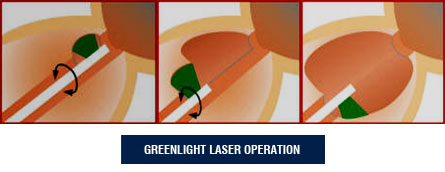
Advantages of the Greenlight Laser
- Can be used without discontinuation of blood thinner agents such as aspirin and coumadin. Due to risk of hemorrhage, those anticoagulant drugs should be discontinued prior to open or closed prostate surgeries such as TURP. Greenlight laser does not require discontinuation of those agents. Because Greenlight is absorbed by the hemoglobin in the blood and evaporated with prostate tissue from the blood vessels. Therefore, during the procedure, hemorrhage is almost nonexistent.
- Shorter catheterization duration: Catheterization duration and hospital stay are shorter (24 hours) in Greenlight procedures compared with those of other operations.
- Hospital stay is shorter. Greenlight laser is performed as an overnight procedure in many of the centers in USA. Patient can be sent to his home in the same day.
- There is no risk of TUR syndrome. Isotonic solution is employed during Greenlight process and therefore TUR syndrome, encountered as a result of the absorption of fluids employed in TUP operations, is not observed.
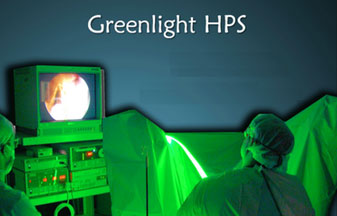
Greenlight laser practice has been first started in the beginning of the 2000s by the usage of devices with 60-80 watt. Recently, models with 120 watt (HPS) have been developed and used parallel to the advances in technology. Those devices are more powerful than the earlier models and have the ability to evaporate considerably more tissue in a shorter period. Thus, patients with significantly enlarged prostates can be treated with laser.
The duration of Greenlight laser procedure varies between 20-60 min. depending on the size of the prostate. The process may end in 20 min. in prostates of 30-50g whereas it can last for 60min. in prostates with 100-120g. Due to all those advantages, Greenlight laser evaporation is gaining popularity among public and preferred by more people each day. The application of this method by experienced hands provides good results and increases the patient satisfaction level.
